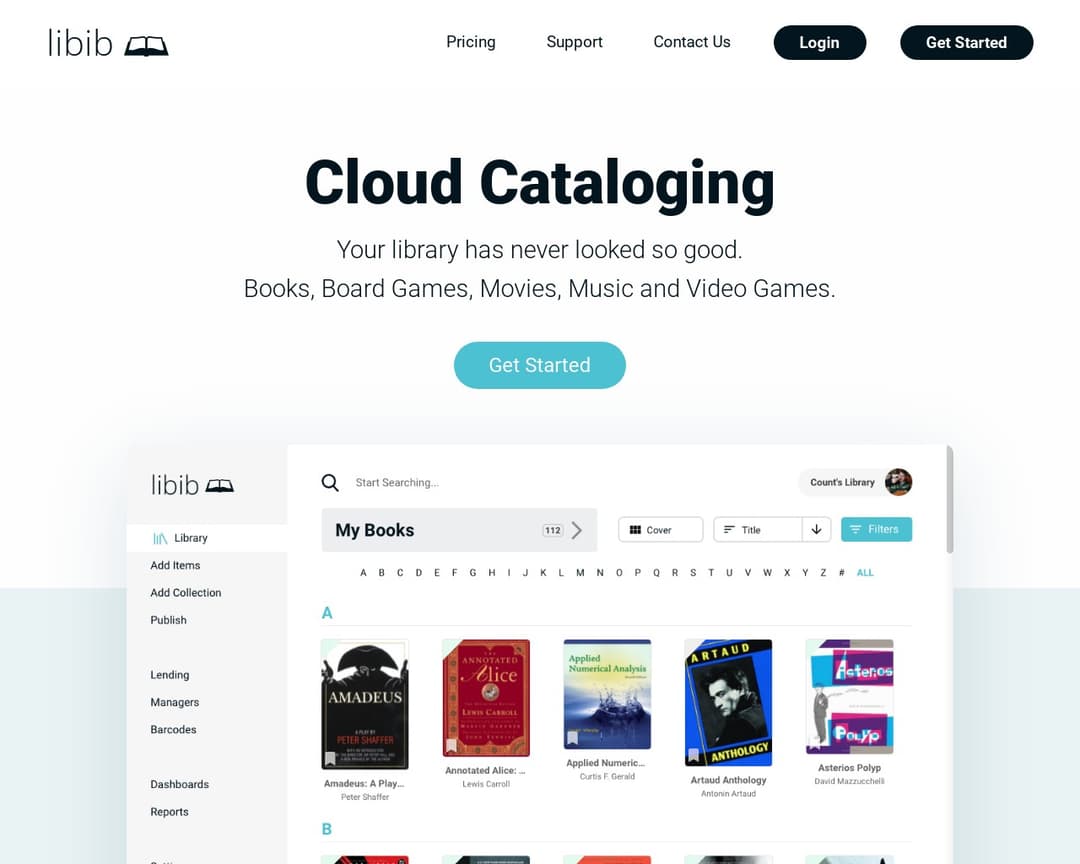Competitors
12
🚀
Discover 50+ More Competitors
This is just the tip of the iceberg. Unlock comprehensive insights into your competitive landscape.
Unlock Full ReportLibib is a cloud-based library management system designed for individuals, schools, and organizations to catalog and manage various media types, including books, movies, music, and video games. It offers features like barcode scanning, manual entry, cross-device synchronization, and for paid plans, lending and patron management. Users can create multiple collections and track their media across different devices.
4 of 5
List & Section Organization
Contextual Side Notes
Public Sharing
Instant Link Adding
URL Saving & Preview
5 of 7
Minimalist Interface
Profile Gateway
Media Type Support
Sign-In & Authentication
Mobile Responsive Design
Granular Sharing Permissions
Embed Support
Libib is a cloud-based library management system that allows users to catalog and organize various media types (books, movies, music, etc.) into collections, which aligns with 'List & Section Organization'. It supports adding notes to items ('Contextual Side Notes') and offers public sharing of collections ('Public Sharing'). The process of adding items via scanning or manual entry is streamlined, fitting 'Instant Link Adding'. While not explicitly 'URL Saving & Preview', the core functionality of cataloging and managing digital/physical media with automatic metadata retrieval serves a similar purpose for library items. The interface appears clean and focused on content, suggesting a 'Minimalist Interface'. Users have a profile and can manage their collections, which acts as a 'Profile Gateway'. It supports various media types ('Media Type Support') and requires sign-in ('Sign-In & Authentication'). The ability to create multiple collections and manage their visibility implies 'Granular Sharing Permissions'. The mention of mobile apps and cloud sync indicates 'Mobile Responsive Design'.

I've been using Alternative A for 6 months now and it's been fantastic. The pricing is much better and the features are actually more robust than what [Product] offers.
It handles edge cases much better and the API is actually documented properly.
Check it out at our site.
Honestly, after trying both, Competitor B wins hands down. Better customer support, cleaner interface, and they don't nickel and dime you for every feature.